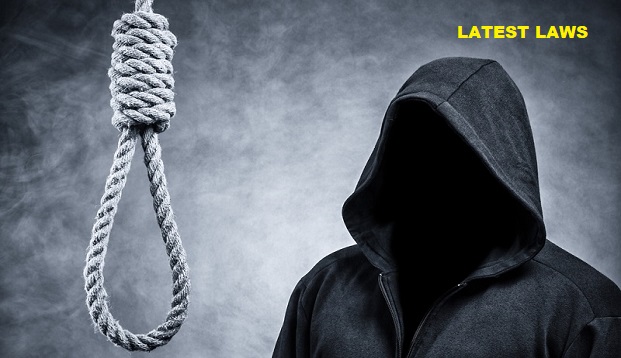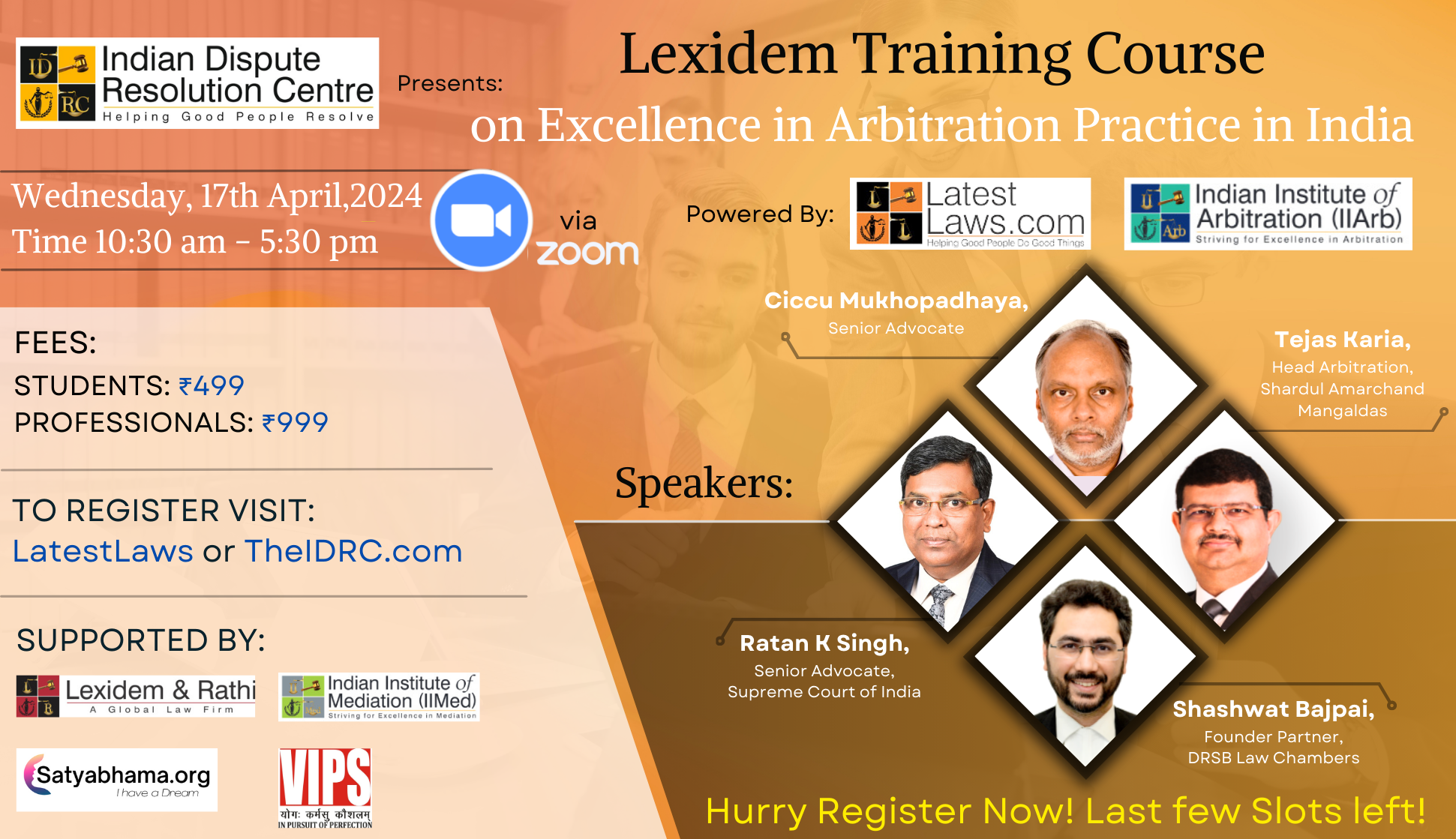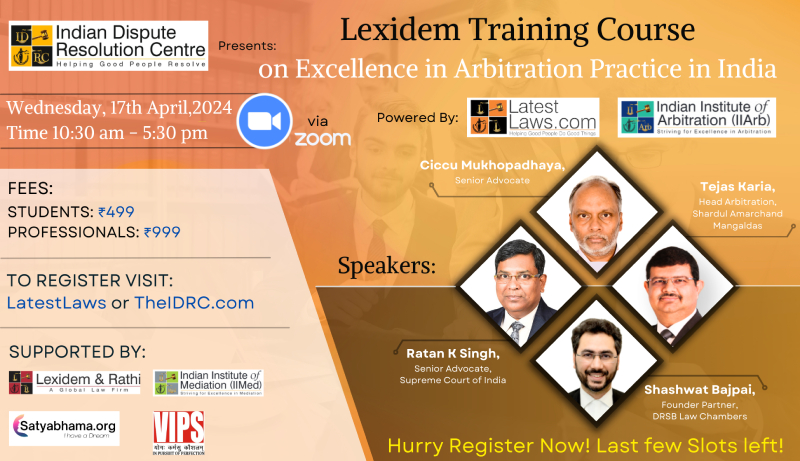July 8, 2018:
All about Judgment and Confirmation of Death Sentences under CrPC By Vatsala Walia (Download PDF)
The Author, Vatsala Walia, is a 4th Year student of Amity Law School, Delhi. She is currenty interning with LatestLaws.com.
JUDGEMENT (CHAPTER 27, CrPC)
Chapter 27 of the Code of Criminal Procedure deals with matters relating to judgement and its delivery. The Code does not provide for a definition of the term “judgement”. It can be understood as the final order of the court, a trial that terminates either in conviction of the accused (if found guilty) or acquittal of the accused (if found innocent).In the case of Surendra Singh v. State of U.P., the Supreme Court defined the term as “the final decision of the court intimated to the parties and to the world at large by formal ‘pronouncement’ or ‘delivery’ in open court.”
Q1. What constitutes a Judgement?
- S. 354, Cr.P.C., 1973 provides for the language and the contents of a judgement. According to this section, every Judgement shall be written in the language of the court which is to be determined by the State Government (S. 272, Cr.P.C., 1973). The judgement should contain the point or points of determination and the reasons for the decision. It should clearly indicate the evidence considered to reach upon the conclusion. The judgement should be a speaking order and must therefore contain the specifications as to the offence (if any) of which the accused is convicted and the punishment he is sentenced to. If there are any doubts as to which of the two parts of the same section the offence falls, the court shall specify the same and pass the judgement in alternative. If any offence is punishable with imprisonment for life or death, and the court in the instant case, prescribes the death penalty, it is duty bound to furnish the reasons for the same.
Q2. How is the judgement to be delivered?
- S. 353, Cr.P.C., 1973 provides the manner in which the judgement of a criminal court has to be delivered. It states that judgement should be pronounced immediately after termination of trial or at some subsequent time with notice to both sides. It has to be pronounced in open court by the presiding officer by delivering the whole of the judgement or reading out the whole judgement or reading out the operative part of the judgement and explaining the substance of the judgement in the language which is understood by the parties. It is a fundamental rule of criminal jurisprudence that the judge who hears the evidence should write the judgement. It was held in Surendra Singh v. State of U.P., that a judgement written by a judge cannot be delivered by another judge. It is merely considered as an opinion.
Q3. Which expressions of the court’s opinion do not qualify as a judgement?
- A judgement is an expression of the criminal court’s opinion. All expressions of the criminal court other than a judgement of conviction or acquittal fall in the category of orders. An order of discharge, an interlocutory order in a criminal case, order of dismissal of complaint (under S. 203, Cr.P.C., 1973) do not constitute a judgement.
Q4. Who is a victim?
- S. 2(wa), Cr.P.C., 1973 which was introduced vide the Cr.P.C. (Amendment) Act, 2008 defines victim as “a person who has suffered a loss or injury caused by reason of the act or omission for which the accused person has been charged and the expression ‘victim’ includes his or her guardian or legal heir.”
Q5. What is the victim compensation scheme?
- The victim of a crime, in addition to the physical and/or mental injury suffers from certain monetary losses as well. The idea that S. 357, Cr.P.C., 1973 incorporates is the combination of the roles of Criminal Court (which punishes the offender) and the Civil Court (which awards damages/compensation to the aggrieved party) to an extent by empowering the Criminal Court to grant compensation to the victim and to order the payment of costs of the prosecution. The order for compensation can be passed by
- a) the Trial Court – at the time of passing of the judgement.
- b) the Appellate Court (or High Court or Court of Sessions) – in revision.
The fine, inter alia, may be imposed in the following cases:
- To meet the prosecution expenses;
- For any loss or injury caused to the victim, when such compensation is recoverable in Civil Cases;
- In cases where a death has been caused or where a person has abetted the commission of such an offence and the victim is entitled to recover damages under the Fatal Accidents Act, 1976;
- The court in its discretion may impose fine in such cases where fine does not form a part of the sentence.
- 357-A talks about victim compensation scheme. It assigns the role of formulating victim, compensation schemes to the State governments and the legal services authorities are suppose to carry out its implementation. This scheme applies to the victims irrespective of the outcome of the prosecution. S. 357-B and S. 357-C have enhanced the protection given to victims by providing for additional compensation to be given in addition to the fine and guidelines for medical treatment of the victims, respectively.
Additionally, S. 358 of the Code provides for compensation to persons who have groundlessly been arrested. The essential requirement for the application of this section are:
- a person must have caused another to be arrested by a police officer;
- the magistrate hearing the case must be of the opinion that there was no sufficient ground for causing the arrest.
Under S. 359 of the Code, the Criminal Courts (and the Courts of Appeal, in cases of revision) are empowered to pass an order for compensation in non-cognizable cases.
Q6. How is the quantum of compensation calculated?
- The quantum of compensation is determined by taking into consideration the nature of the crime, injury/ loss suffered and the convict’s capacity to pay compensation. In the case of Manish Jain v. State of Karnataka, the Apex Court opined that the amount of compensation has to be reasonable.
Q7. What are the key provisions related to judgement incorporated in the Cr.P.C., 1973?
- S. 362 of the Code states that no Court, when it has signed its judgement or final order disposing off a case can alter or review the same unless it is done in order to correct clerical errors. S. 363 provides that a copy of the judgement has to be given to the accused and other persons. In the case of Shree Lal Sarof v. State of Bihar, the Court held that when a person is affected by a judgement or an order passed by a criminal court, then on application made in this behalf under S. 363(5), and on the payment of the prescribed fees, he has to be provided a copy of the order, disposition or other part of the record irrespective of whether he has appeared in the court or not. S. 374 of the Code provides for the translation of judgement. S. 375 of the Code provides that in case tried by the court of sessions or by a chief judicial magistrate, the court or such magistrate shall forward a copy of the finding/sentence to the district magistrate within whose local jurisdiction the trial was held. The logic behind this provision is to keep the DM informed about the serious crimes.
CONFIRMATION OF DEATH SENTENCES (CHAPTER 28, Cr.P.C).
The Supreme Court has been time and again stressing on the fact that the sentence of death penalty (in cases of offences where other punishments have been prescribed for should be a rarest of the rare phenomena. The death penalty is not the rule, but the exception and while awarding the death penalty, the court has to furnish the special reasons which motivated the court to come to this conclusion. The Apex Court has mentioned various factors to be considered while awarding Death Penalty in the cases of Bachan Singh v. State of Punjab and Machhi Singh v. State of Punjab.
Q1. Why is there a need to submit death sentences for confirmation?
- S. 366 of the Code provides that death sentences passed by a court of session are to be submitted for confirmation to the High Court and are not to be executed until confirmed by the High Court. This is done while keeping in mind the irrevocable character of the death penalty and as a precautionary measure against a possible error on the part of the trial court in reaching the conclusion. This provision is mandatory and is applicable irrespective of any appeal, if any, filed by the accused.
Q2. What are the High Court’s powers under this chapter of the Code?
- The High court is empowered to direct further inquiry into the case and additional evidence may be gathered under S. 367 of the Code. Such inquiry may be carried out by the High Court itself or by the Court of Sessions.
Additionally, S. 368 of the Code empowers the High Court to confirm or annul the conviction. No order for confirmation can be made until the period for preferring an appeal has expired. In the case of Kartarey v. State of U.P. , it was observed by the Supreme Court that “it is the duty of the high court to re-appraise the entire evidence and consider the proceedings in all aspects and then come to an independent conclusion on the merits of the case.”
In every case that is submitted to the High Court for confirmation of the sentence, when the bench constitutes of two or more judges, the order passed by the High Court has to be signed by at least two of them (S. 369). Where an order of confirmation or any other order has been passed by the High Court in cases of confirmation of death sentences, the proper officer of the High Court shall send a copy of the order carrying the seal of the High Court to the Court of Sessions (S. 371).
Picture Source :




























